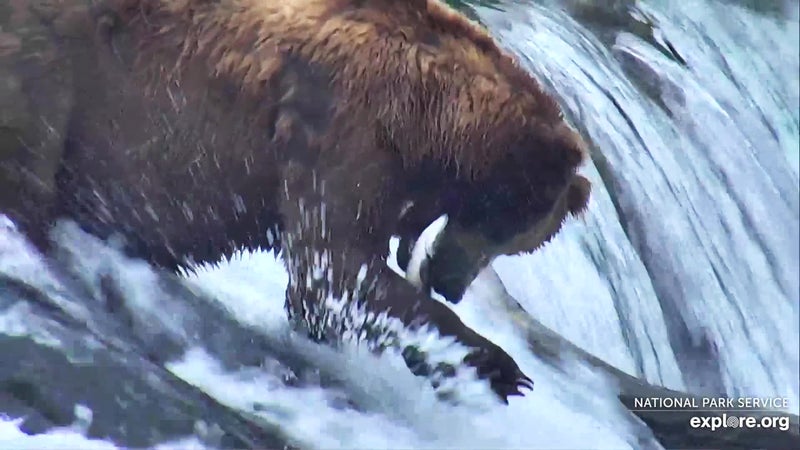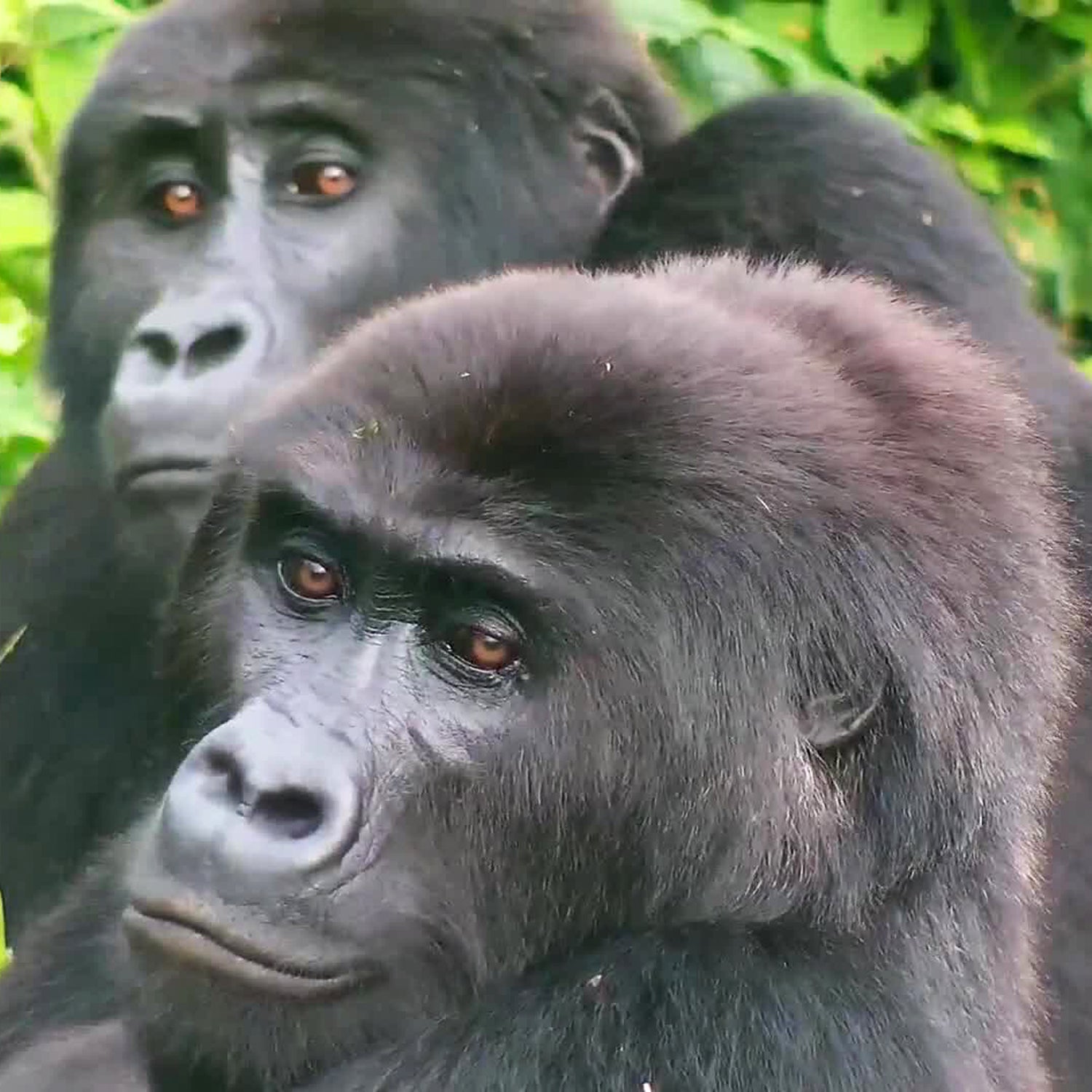Ask housewife Deanna James what Harriet and M15—two bald eagles who live in southwest Florida—are up to at any given moment, and she’ll know the answer. In August and September, they start building their nest. By mid-November, Harriet lays her eggs. Over four years into her eagle-watching journey, James, 52,��makes��predictions about how many eggs she��thinks��Harriet will��lay. She always hopes for one, because it’s easier for the parents to care for only one offspring, she says. The eggs usually hatch around Christmas and, for a week or two, James regularly prays for the hatchlings at church. (This year��the birds’ ��just about a month after its December 19 hatching.) Until spring rolls around, Harriet and M15 righteously care for their young, gathering food��and preparing them to fly from��the nest, which��usually��happens in April or May. This is when the season ends, and when James experiences minor separation anxiety from her home in Portland, Tennessee.
“When the cam goes off, I just about lose it,” James says. “From the time it starts until the time it ends, I’m there with them.”
Such is life for this dedicated viewer of the , which presents a constant livestream of the nest and the surrounding area. It’s run by Dick Pritchett Real Estate, an agency in Fort Myers. After a pair of eagles settled in a tree on the Pritchett family property in 2006, the fowl quickly began drawing a crowd of local birdwatchers and photographers, says Andrew Pritchett, a sales associate at the agency,��who manages the eagle cam. Seeing��the��humble nest’s relative IRL popularity and the emergence of other , the family decided to launch its��own and installed cameras on the trees surrounding the eagle nest in 2012.
When James first came across the feed on Facebook, she was immediately transfixed. From the moment she wakes up every day,��she pulls up the stream on her laptop. If she has to leave the house, she’ll play it on her phone. To make up for lost time, like when she’s asleep, she’ll scan the archive in the morning to see what she missed.
Of course, these live feeds are hardly exclusive to bald eagles. In Alaska’s Katmai National Park and Preserve, viewers can . From the comfort (and safety) of the couch, the ��in Yosemite is accessible. Regardless of whether you’re into ��or , live feeds present a wide range of natural goings-on in real time, available to curious viewers whenever, wherever.
One of the most popular collections of live feeds is , a network of 166 cameras worldwide that broadcasts live feeds of Katmai’s��popular��Fat Bear Week��bracket–style competition, an��, , and . Since the site’s launch in 2011, page views and hours streamed have doubled, with 11,287,451 hours streamed in 2019 alone, according to Courtney Johnson, Explore’s social-media director. Johnson says that viewers are mostly women over the age of 50. Eagle, service-dog, and bear cams are among the site’s most popular, she��says, offering viewers the chance to witness far-flung, remote parts of the planet��without any expense or effort. An abundance of research��has shown the benefits of being outdoors, but viewing a livestream��from the comfort of our desks can provide a respite from reality and inspire us to explore in the real world, too.
A growing body of research also suggests that virtual nature experiences��may provide similar benefits to the real thing. A from the University of California at��Berkeley, commissioned by the BBC, found that when participants watched clips from the popular nature-documentary series Planet Earth II,��they experienced “increases in feelings of awe, contentedness, joy, amusement, and curiosity, but that it also acted to reduce feelings of tiredness, anger, and stress.” In 1991, ��that people who had just watched a stressful��movie recovered from the experience more quickly when they watched a video of nature (compared to a video of an urban environment) immediately afterward. Even video games that depict adventure-related challenges��and landscapes can give users a sense of purpose and empowerment when completing segments, as �����ԹϺ��� has previously reported.
Dana Erickson, a 40-year-old music publicist who lives in New York City, says that animal live cams can help counteract the anxiety��that often comes with a contemporary urban lifestyle. Erickson is an animal person at heart, and since the first iteration of the popular ��in 2008, live feeds have been a consistent component of her internet diet. She often keeps a nature feed open in a tab—usually of a destination she’s traveled to before, like —for easy access after sending a stressful email.
“It’s voyeurism, but not in a naughty way,” Erickson says.��“You literally can smell the air they’re surrounded with and taste the water splashing. It transports you so quickly. I feel like I can do that to anything, even if it’s not a place I’ve visited. It’s 100 percent��pure escapism.”

For three years, Mari Sasano, a writer and editor in Edmonton, Alberta, has kept up with a family of peregrine falcons via a Facebook . They nest close to her office, on the 29th floor of a high-rise. Sometimes��she sees them fly past her office window. “It’s a thrill because I know these birds, they’re a few blocks down from where I am, and I’m watching them,” Sasano says. “It’s a reality show.��You do follow the progression day to day, so that tells the story, really.”
Just as reality TV offers a mindless viewing experience with drama and familiar characters, nature livestreams provide low-stakes entertainment with even��less of a narrative arc. Erickson can check in on otters one day and gorillas the next��and maintain some semblance of continuity. Sasano developed a personal attachment to the familiar falcons, which��she spots both on her desktop and from her window. Johnson, Explore’s social-media manager, says that fans of Fat Bear Week��often pick up on subtle identifying features of the bears that even park rangers may not have observed.
But not all nature livestreams provide a respite from reality—they can also help relay information viewers are seeking for their adventurous endeavors. Skiers wondering whether it’s worth the trip to the mountain (are there crowds? what’s the weather like?) can tune in to a . Hunters can utilize ��to help narrow in on active locations for wildlife, skateboarders can , and golfers can get a . Some cams serve as��wish fulfillment for those who want to hit the trails but are unable to. Bartender Tucker McGrath will wistfully watch live surf feeds in Malibu, California, a long way from his home in New Jersey. “It’s fun to wake up some mornings and look at the camera,” he says.
An avid surfer, 29-year-old McGrath also frequently checks the surf conditions near where he lives in Asbury Park and at various beaches in New York and New Jersey (and even remote destinations like Indonesia and Central America) on the surf-forecasting site , which he calls “The New York Times or The Washington Post of surfing.”
About three years ago, McGrath was interested in joining Surfline’s expansive live-camera network, so he climbed onto the roof of his family’s New Jersey shore house, shot some photos, and sent the company the images. A year later, Surfline sent a crew to install . (Surfline pays McGrath a small monthly stipend and covers Wi-Fi at the house.) Even if he’s back at home, he’ll check the shore-house feed, hoping the swell��is just right, providing him an excuse to ditch responsibilities and grab his surfboard. “Do I check the cam compulsively? You bet. Even if the conditions are shit, I’ll still look.”
Deanna James, the housewife who can’t live without the Southwest Florida Eagle Cam, can’t completely uproot and reinvent herself as a full-time birdwatcher—but the stream gets her a little closer. “People think I’m crazy,” she says, “but it’s like, whatever.”


